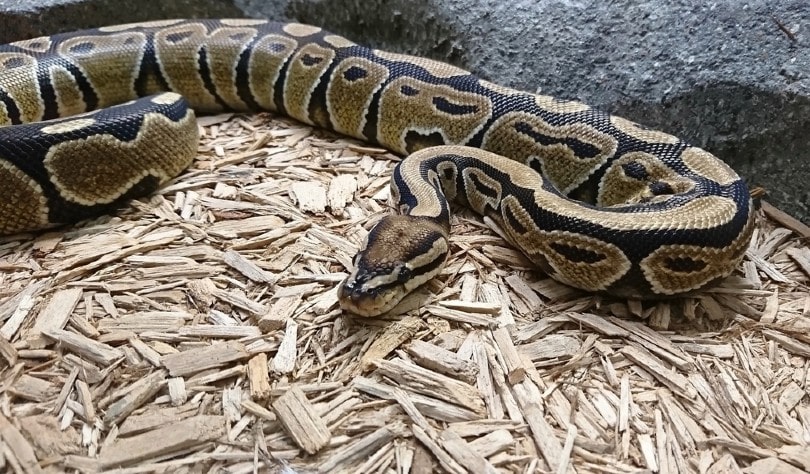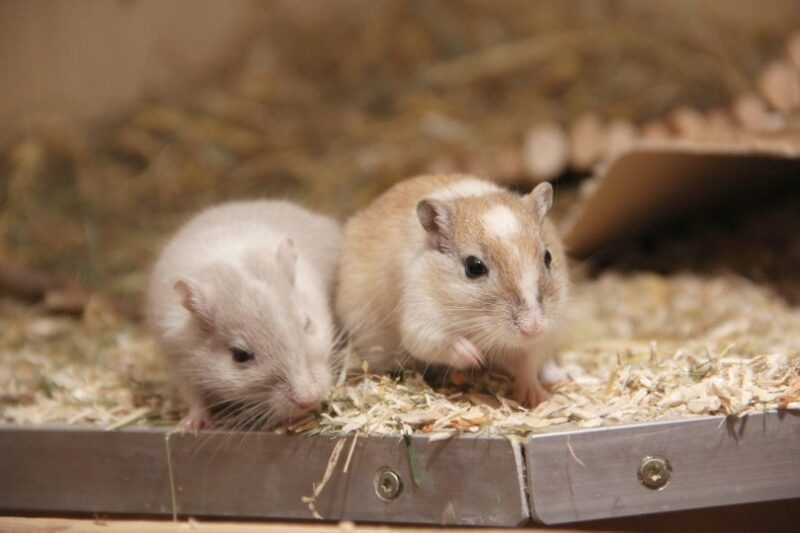Click to Skip Ahead
Being “gravid” means your python is carrying fertile eggs, and it can be difficult to tell, especially at first, whether she is pregnant. Ball pythons typically lay eggs about 4–5 weeks after mating, so you’ll find out soon enough!
While an X-ray or ultrasound checkup with the vet is the only way of being certain that your python is pregnant, there are a few other signs to look for. In this article, we’ll go over the signs in detail.

Veterinary Checkup
The only way to be absolutely sure that your ball python is pregnant is with an X-ray or ultrasound performed by a vet. Gravid females have visible eggs that will confirm their pregnancy. Of course, this is an expensive and time-consuming process, and watching for other signs first can save you the time and money of going to the vet repeatedly while trying to figure it out. Here are a few of the most common signs of gravid females.
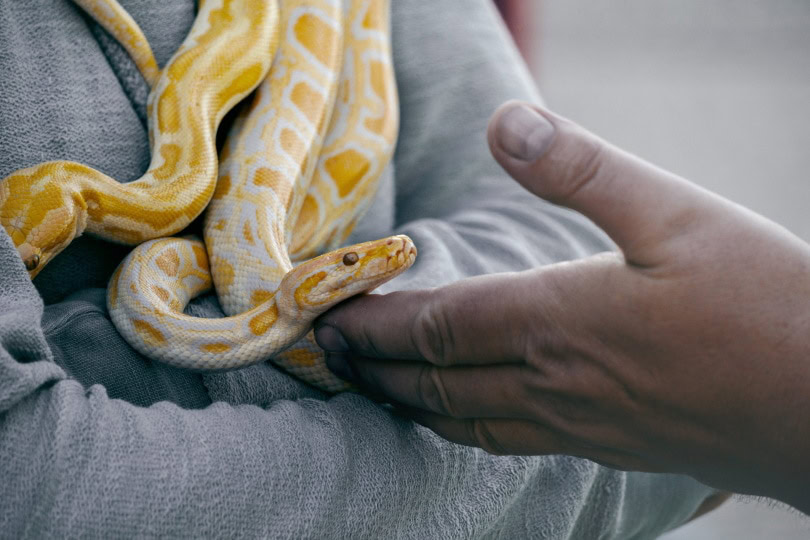
Cool Seeking
A pregnant female will typically seek out the cooler areas of her enclosure, avoiding the heat lamp and attempting to stay as cool as possible. She may also bathe in her water bowl or wrap herself around it in an attempt to stay cool. Some females also lie belly up on their backs. This is done to keep the developing eggs cool, as they are sensitive to heat.
Lumping Up
Follicles, the egg-containing sacs in the ovary, will begin to develop, causing a lumpy appearance in your python’s belly around 2/3 of the way down. She will look as if she has swallowed a bunch of marbles rather than the more uniform swelling seen after a big meal.
Behavioral Changes
Gravid females become heavier and thus rather uncomfortable, causing them to constantly change their position and display strange behaviors. They may pace their enclosure continually, seeking out cooler areas and then suddenly going to warmer areas, lying on their backs, and even refusing food. Gravid females may stop eating altogether for a while, which is nothing to worry about. For this reason, females should be fed extra before pairing with a male.
Females also become somewhat aggressive during this time, and you should avoid handling your python until her eggs have hatched.
Color Change
During ovulation and pregnancy, your python may change color slightly, with her scales appearing lighter and more contrasting. Breeders often refer to this as a “pregnancy glow” and consider it a good sign of pregnancy, but a similar process happens just before shedding.
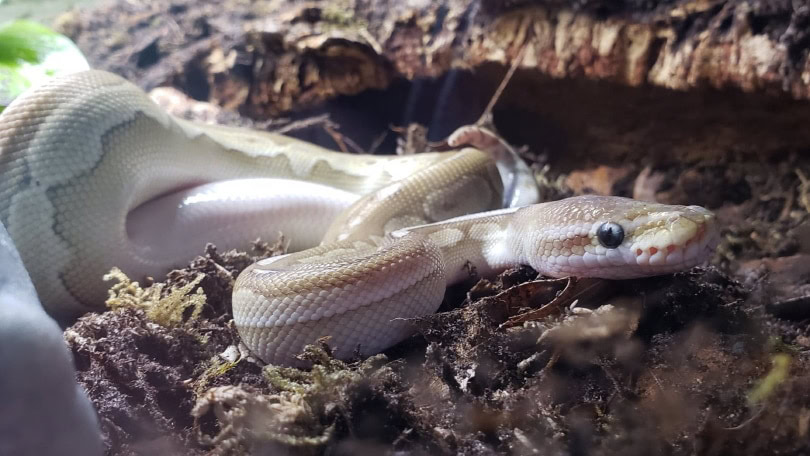
Pre-Lay Shed
About 2–3 weeks into pregnancy, females begin a “pre-lay shed” to make more space for their rapidly growing bodies. Of course, this could just be their regular shedding, too, so check to see if any of the aforementioned signs are present before getting too excited!
- See Also: How Often Do Ball Pythons Shed?
How Long Are Ball Pythons Pregnant?
The gestation period of ball pythons is measured from the day of ovulation until the day of egg-laying, which can last 44–50 days. Interestingly, the term is not measured from the day of mating, as ball pythons can retain viable sperm for months or even years. They may become pregnant a few weeks after mating or as long as a few months after mating.
After about 2–3 weeks, the female will enter her pre-lay shed, at which point you’ll know there is about a month of pregnancy left. This shed is to make space for her growing body and developing eggs. You can now begin to set up her nesting box and make preparations for the coming eggs and hatchlings.
On average, females lay around six eggs per clutch, but the number can be anywhere from one to 11 eggs, and the eggs can take up to 2 months to hatch.
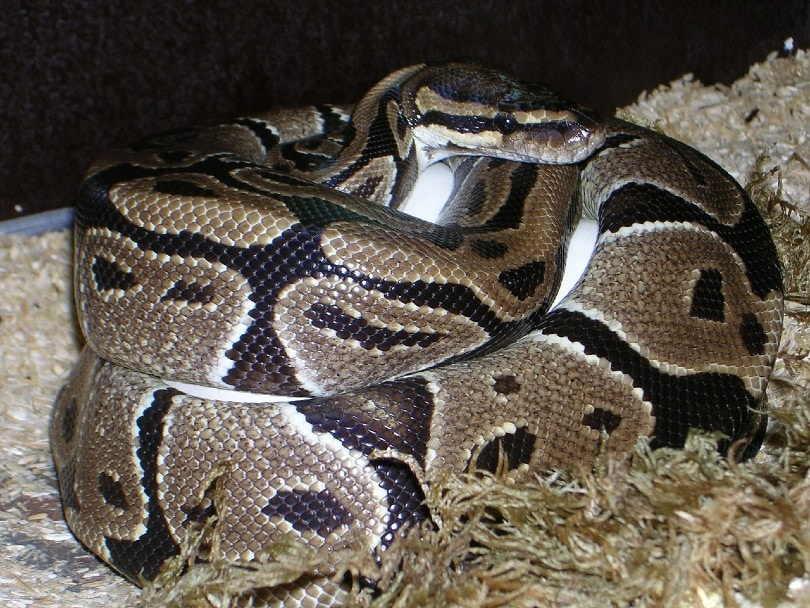
Can Ball Pythons Lay Eggs Without Mating?
In a process known as parthenogenesis, or asexual reproduction, some pythons can lay eggs without any recent mating. While this is rare, pythons and some other snakes have been recorded reproducing asexually, and the eggs are either infertile or clones of their mother. Most of these cases are due to stored sperm, however, as females may be able to store fertile sperm for 5–6 years! So, although your female may not have been in contact with a male for several years, she could still lay fertile eggs from stored sperm.

Final Thoughts
Other than an X-ray from your vet, there are other signs to look for in a pregnant python. These include lumping up, behavioral changes like cool-seeking or mild aggression, decreased appetite, and color changes. If your python is under 3 years old or has not had contact with a male, it’s highly unlikely that she’s pregnant. However, if she displays these signs, it’s a good idea to take her to the vet to make sure!
- See Also: Snakes That Give Live Birth Like Mammals
Featured Image Credit: Cheng Wei, Shutterstock
